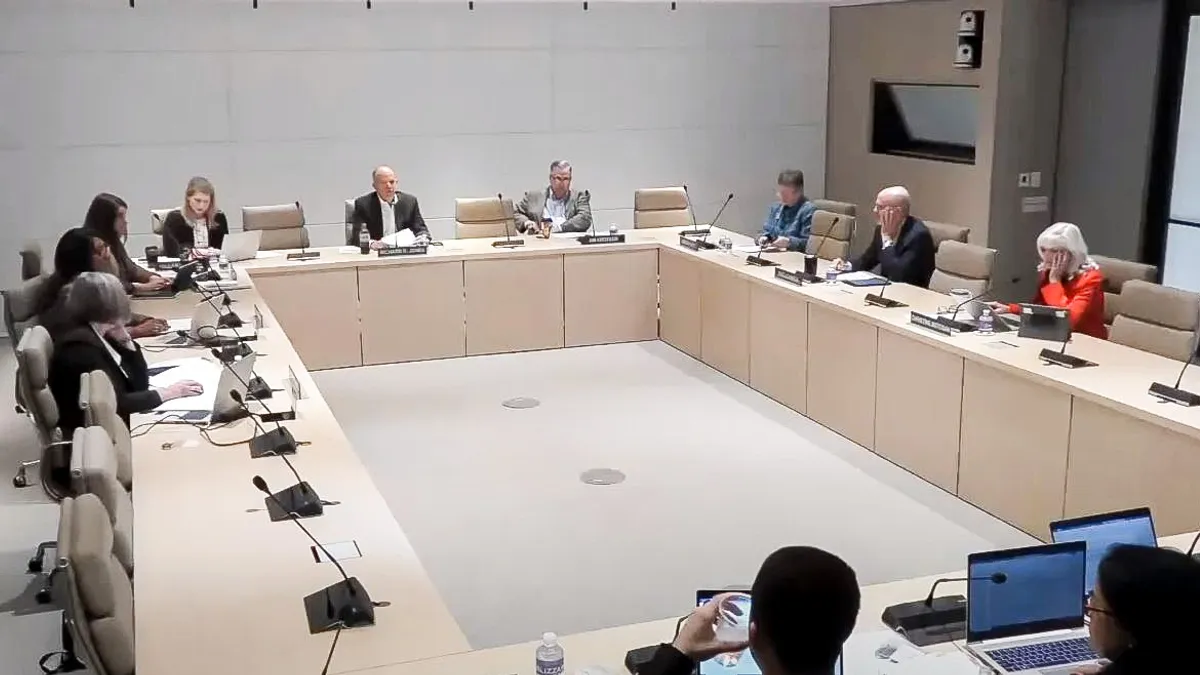Dive Brief:
- The Financial Accounting Standards Board has agreed to move ahead with a proposed standards update aimed at simplifying how private companies and most not-for-profit entities account for credit losses when it comes to current accounts receivable and contract asset balances stemming from revenue transactions, according to a recap of tentative board decisions made at the U.S. accounting standard setter’s meeting last week. The board also set a 45-day comment period for the update.
- Under the relief known as a “practical expedient” endorsed by the board, private companies would not have to adjust AR and contract asset loss information to reflect potential future losses based on economic forecasting, but instead would assume the current economic conditions would stay constant from the date of the balance sheet through the forecast period, the FASB said.
- Several members of the board also supported exploring the idea of extending the relief to some or all public companies, noting that forecasting future losses could be a costly exercise, yet one that doesn’t have a big impact on the information provided in financial reports. “I don’t think we should slow down the process but I am very interested in extending this to other companies,” FASB member Susan Cosper said at the Oct. 16 meeting, calling for further study on applying the expedient to public companies.
Dive Insight:
The proposed update stems from a request from the Private Company Council, the primary advisory body to the FASB on private company matters. At its core, the change is related to rules around how Topic 326, Financial Instruments — Credit Losses, should be applied when arising from transactions related to Topic 606, Revenue from Contracts with Customers, according to a board handout.
The new proposal relates to a specific limited type of asset that is more relevant to vendors than banks or financial services firms, according to Sean Prince, a partner in the Washington D.C. office of the Crowe accounting firm. Trade AR typically reflects money that a customer has agreed to pay a vendor on an unconditional basis for goods or services, while payments for contract assets are effectively conditional and vendors can’t invoice for them until the service or product provided is 100% completed, Prince said.
As private companies have adopted the new standard, it has become apparent that the rules require complex analysis and work between a company’s accountants and auditors to determine which macroeconomic factors need to be considered to determine potential losses.
“This proposal would take away that,” Prince said in an interview. “It would say, ‘Look, you don’t need to look forward for a specific subset of financial assets with respect to macroeconomic developments, you could simply roll forward the current and or historical economics for trade AR and contract assets.”
Prince noted the proposal only calls for providing an alternative to the requirement that companies must factor in macroeconomic projections into their loss calculations. Private companies considering an initial public offering would likely want to stick with the current requirements for public companies. “You always have companies flirting with going public and they might want to shy away from these alternatives,” Prince said.
Earlier this year, the FASB also took another step toward tweaking Topic 326, a standard that grew out of the 2008 financial crisis, which sought to foster timelier reporting of financial losses after concerns arose about delays by banks and other financial companies in recognizing deteriorated asset values, CFO Dive previously reported. Under that new proposal, companies would be required to use a single so-called “gross-up” accounting model when reporting purchased financial assets such as equities, loans and debt securities, whether they are acquired through business combinations or outright asset acquisitions, CFO Dive previously reported.













